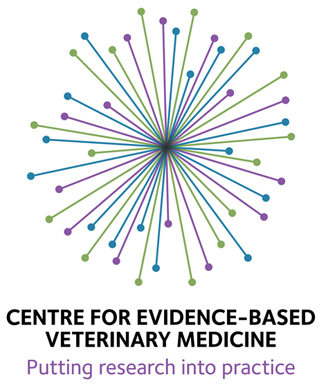A certain “holistic” veterinarian about whom I’ve written before (here, here, here, and—well, you get the idea) has asked a couple of good questions on his own blog, though not surprisingly I don’t find his answers at all convincing. I’m interested in talking about these questions not so much as a response to the fellow himself, who is beyond even considering any weaknesses in his own philosophy or view of the world, but because they are truly good questions, and they provide an opportunity to look at some key elements to the persistence of ineffective veterinary treatments despite their lack of efficacy.
The first question was, “If natural therapies don’t work, and I continue to market them to the public and use them in my practice, am I guilty of ripping off the public?” The short answer, is “Yes!” which is part of why I write this blog.
Of course, I have made it clear many times that I doubt most vets, or others, practicing ineffective nonsense therapies like homeopathy, energy medicine, and so on, are actually intentionally lying. I accept that most of them truly believe that what they do is helpful, for all the reasons we all make poor judgments and delude ourselves from time to time. I don’t fault them for their mistaken beliefs, only for their arrogance in refusing to consider the evidence against them.
Rather than offer any evidence for the effectiveness of his methods, the author instead asks a series of somewhat ridiculous rhetorical questions.
Why have I never been prosecuted and convicted of being a con artist?
So the failure of the local DA to prosecute him for fraud proves that what he does works? No, it simply proves that what he is doing is (probably; he rarely offers specifics) not illegal and that he likely really believes it works and so is deceiving his clients unintentionally.
But the issue of illegal claims made on behalf of herbs, nutritional supplements, medical devices, and other CAM interventions is a real one. The law does limit what providers of such products and services can claim. Claims of being able to prevent or treat specific disease conditions are subject to laws and regulations requiring such claims be demonstrated by legitimate scientific evidence. The FDA, Federal Trade Commission, and other state and federal agencies have complex and overlapping webs of jurisdiction over such claims. Unfortunately, these organizations are understaffed and underfunded, and they have neither the resources nor the political will to police individual practitioners or organization.
I once asked a representative of the FDA’s Center for Veterinary Medicine how to best go about reporting illegal claims about veterinary therapies. She sighed and indicated that apart from large companies selling compounded drugs on a large scale, or products that might conceivably be a risk to human health directly or through food production, the agency was unlikely to be able to investigate or respond to such claims. I have, in fact, filed a number of complaints about egregiously and clearly illegal marketing of unlicensed therapies to the FDA and the FTC, and I have never had so much as an automatic email in response. There are many reasons, practical and political, why unproven therapies are not subject to control by law enforcement, but their underlying effectiveness is not one of these reasons.
Why do my patients improve when conventional doctors can’t help them?
Of course, he assumes this is true and would like us to assume so along with him. Once again, he offers no evidence of it, and we have no reason to believe it is so since the sorts of alternative approaches he advocates range from the possible but unproven to the outright ridiculous and impossible.
In the absence of any scientific study, CAM providers can claim what they like about the results of their treatments without fear of contradiction, and they frequently do. I could certainly advertise that I save lives where alternative therapies have failed. In fact, I believe I do! But such claims are not themselves proof of anything. Rarely are there direct comparisons of the effectiveness of a CAM treatment versus a scientific treatment, since this is precisely the sort of evidence CAM providers do not seem to feel they need.
Why does the public continue to come to me, seeking the kind of care I can offer their pets that they can’t get elsewhere.
This is indeed a good question, though the implication that people seek his care proves it must work is no more reasonable than the argument that people play the lottery so they must be winning. There are many reasons why people seek alternative medical care:
1. Desperation-As I’ve discussed before, people facing an illness that cannot be effectively treated by scientific medicine will resort to anything that gives them hope or the promise of a better outcome. This is understandable, and no one can be faulted for wanting their beloved pets to be better. Unfortunately, unproven and bogus therapies offer only false hope and often come with the risk of making things worse.
2. Comfort- I don’t know this particular vet, but I do know that many CAM practitioners seem to meet the psychological needs of their clients better than many conventional doctors. A caring demeanor, asking detailed and lengthy (even if medically meaningless) questions about every aspect of the patient’s life, a non-traditional, non-clinical consultation environment, and many other factors can make the genuine caring a CAM doctor feels for their patients clear to the clients.
It is a shame that the traditional medical environment and the time pressure many vets work under, as well as the lack of effective training in communication, sometimes mask the equally genuine caring science-based vets feel for their patients. And, of course, science-based vets are limited in the comfort they can offer by their need to be honest with clients about the uncertainties and limitations of medicine, whereas believers in miracles and magic can freely claim nothing is ever beyond hope of a cure.
3. Philosophy-Many clients seek alternative medical providers because they themselves are believers in vitalistic philosophies or are suspicious of science and conventional medicine for personal or political reasons. I once saw a clients whose dog was in great pain from a bone tumor. the dog would not walk on the affected leg, and he cried piteously when I touched it. The owner had come to me out of desperation after none of the alternative therapies she had chosen to pursue first had made the disease go away. I had some therapies to offer, though not a cure, but she refused to consider amputation, radiation, or other such conventional treatments because she believed them to be unnatural and harmful rather than beneficial. What struck me the most about her beliefs, though, was that she refused to consider any pain medication for her dog and seemed surprised and offended when I offered it. She was having acupuncture done to the dog and using a homeopathic remedy, and despite the obvious pain the animal was in, she really believed these were working, and she certainly believed they were better than “toxic drugs”. People will ignore great even powerful and obvious information if it contradicts what they believe or wish to believe.
4. Control-CAM often involves changes in diet or lifestyle that the client is responsible for. This can give them a sense of control, of being able to actively do something to combat the illness their pet is facing. And CAM therapies are often given along with simple and intuitive explanations of the disease and the treatment, which is more appealing then the often complex, abstruse, and nuanced scientific descriptions of the pathophysiology of the disease and treatment. This too makes the client feel more in control and less bewildered by what is happening to their pet.
The second general question our holistic colleague asks is this:
If natural therapies don’t work, then why does the government (FDA, state licensing agencies, AVMA, etc.) allow me to use them in my practice? Why would the government, especially the FDA, knowingly not just allow but also support the use of natural therapies in the practice of medicine unless they are in on the “scam” too? Why does the FDA regulate homeopathic remedies (which the skeptics claim don’t work) just like they do conventional medicines if these homeopathic remedies are nothing more than “sugar pills?”
His answer?
The only conclusion someone can draw from this discussion is simply this: since the government allows doctors to use natural therapies, these therapies must work and have some value in the practice of medicine. Otherwise the government could easily make it illegal to use natural therapies and prevent doctors from using them. Punishment for using these unproven natural therapies would be swift and severe, such as the loss of the license to practice medicine and possibly even criminal penalties. Since this doesn’t happen, it must be that the government recognizes the value of using natural therapies in the practice of medicine.
Not even close. The reality is that government licensing and regulation is far more about politics than it is about science. As I’ve discussed before, homeopathic remedies were grandfathered in to the original laws establishing the FDA for purely political reasons. And technically, the FDA has ruled that this does not extend to the use of such remedies in animals, so they could prohibit them if they had the political will to do so, which clearly they do not.
Similarly, veterinarians are licensed at the state level, and their activities are limited by the provisions of state veterinary practice acts. These acts are written by legislators, who are clearly not scientists, and they rarely specify precisely what is or is not considered legitimate veterinary medicine. And, of course, we wouldn’t want them to since the science is far too complex and continually evolving to expect e could enshrine it in law. Specific interventions are sometimes legally prohibited, such as declawing of cats in some local jurisdictions, but this is uncommon and, again, driven by politics and public opinion, not sophisticated assessment of the scientific evidence for what constitutes effective or ineffective therapy.
And the professional organizations that represent veterinarians are reluctant to make strong statements about what is or is not legitimate medicine. They are primarily concerned with ensuring that whatever treatments are applied to animals, they are exclusively the purview of veterinarians, a position which has some legitimacy in terms of consumer protection but which also smacks greatly of simple economic protectionism.
Attempts by professional organizations to oppose quack therapies have been made in the past, and these have been met with legal and political counterattacks that have had devastating effects. The American Medical Association once tried to suppress the use of chiropractic for both scientific as well as, admittedly, less laudable reasons. The organization lost an anti-trust lawsuit as a result, and quickly got out of the business of aggressively trying to promote scientific standards where CAM was concerned. And the very existence of the Dietary Supplement Health and Education Act and the National Center for Complementary and Alternative Medicine, both political constructs that have effectively protected unproven and bogus therapies despite all scientific evidence against them, is testimony to the inability of the political process to supervise anything like rational scientific standards for medical practice.
The amount of time this particular vet spends responding to skeptical criticism (albeit without providing any facts or sound arguments to counter it) seems to me to be a good sign. It demonstrates that even the most committed proponents of alternative medicine recognize that such criticisms have weight and influence. We will never banish irrationality, but the fact that even CAM proponents attempt to claim that science is behind their approach and that they often attempt to employ the language, if not the methods, of evidence-based medicine indicates that even they recognize that the public believes and trusts science more than they would like us to think. The facts, unfortunately, do not speak very loudly or effectively for themselves, so we who are committed to scientific medicine must speak for them.









